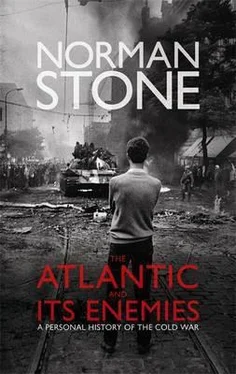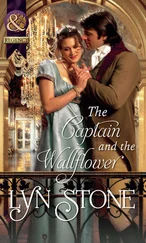The great British staples had been coal, shipping, textiles. Grand Victorian cities had been built up on that basis, Glasgow, Birmingham, Liverpool, Manchester especially, which Taylor knew so well, and in their great days they had been as much pioneer cities as had been, say, Boston. Even in the 1950s, the staples were holding up, in part because markets in the Empire had been protected. Cotton textiles still amounted to half of exports in 1950, but India and Hong Kong had been allowed to export with an agreement in 1932, and England became a net importer of cotton goods at the end of the decade, for the first time since 1750. The war had at least got shipping going again. But in the 1950s there was also an absolute decline and later in some cases even a collapse; it affected some of the very industries upon which the thirties recovery had been based.
Shipping was a British disaster area. After 1945 there had been a world boom, as trade grew, and by 1975 world shipping output had risen to 36 million tons, as against the pre-war 2 million (at worst) and 7 million (at best). For a time the British went on as before, with 1,324 launchings in 1950 (almost two fifths of the entire world figure). The chief shipping centres, especially Glasgow, flourished: those ranks and ranks of cranes, stretching all along the Clyde estuary, with an entire culture to match, and, at its educational heart, the Royal Technical College, which trained generations of engineers and maritime specialists from all over. In 1950 the British merchant fleet was a quarter of the world’s. But then came decline — 172 launchings in 1985 — by which time the British fleet was only a small fraction of the world’s. Some of this was ‘unfair’ in the sense that strong competition, and a desire to cut costs and to avoid the detailed regulation that was coming up, meant that there was an enormous growth in foreign registrations (e.g. Panama). Some of it had to do with pride in quality: those Clyde-built steamers sometimes had an extraordinary finish, no longer in demand. But a great deal had to do with new technology, at which Norway and Germany became more adept, with oil tankers and container ships: these were ugly, sometimes prefabricated and welded together. Japan, as the Korean War went ahead, boomed. By 1956 she had overtaken Britain, where yards were too small and apparently dominated by skilled men defending their position at the expense of technology that might have been used by people with lesser skills — an old, old problem.
Steel was another sad story. By 1914 the USA had become the largest producer, but two fifths of British steel was made for export, and in 1939 (despite legend) Germany was not ahead. After 1951 a large European market became the main stimulus, but England had not joined the European Coal and Steel Community and therefore missed much. German steel had not been nationalized, because the Allies had shrunk from relaunching it, and this saved Germany from the formula that did such harm to British steel (which was twice nationalized and denationalized). In the fifties there was a seller’s market: even small plants made money, and when a delegation from Port Talbot in Wales went to Chicago as part of a scheme organized by the Anglo-American Council on Productivity it did not even mention trade unions as part of a problem. Governments attempted to plan, as governments tend to plan where steel is concerned, and placed plants for political reasons, at Ravenscraig and Ebbw Vale, respectively in industrial west-central Scotland and Wales. The ECSC on the Continent, by contrast, forced producers to rationalize, rather than to appease local interests, and an integrated market grew up. French strip mills supplied German car factories, and themselves used German coking coal; and there was an American system of pricing that allowed for more competition than in Britain. When Lorraine lost its advantage to Brazil and Australia, and inland steel became less competitive, plants were shifted towards the sea ports (Bremen, for instance, arose because of Dutch-German collaboration, as did, on a greater scale and for other goods, Rotterdam). The French constructed Usinor at Dunkirk. In Germany, Vestag was broken up in just the right way, with successor firms of appropriate size for specialization and competition — hence Krupp, Mannesmann, Thyssen, Hoesch. Germany had had less Marshall aid than other countries, and the financing for this came from a levy of the steel-users in 1952, with consequent closer attention to what was done with the money. Output then trebled in the early fifties. Japan managed a similar feat later on, her exports rising from 6 per cent of all in 1960 to 23 per cent in 1973, by which time British Steel had become almost comic. The labour force, of 340,000 in 1969, was at least one third too large. Nippon Steel produced 520 tons per man per year, Thyssen 370, Bethlehem Steel 180 and British Steel, in 1975, 122. By 1980 British steel cost a third more than German, and subsidies were far larger — in the latter half of the seventies, the equivalent of DM14bn, to the Belgians’ DM3bn and the Germans’ DM1bn.
The most obvious hammering for the country came from the motor car industry. In 1960 BMC had been comparable in size with Volkswagen; in 1975 it folded. By 1990 Rover was a subsidiary of British Aerospace, and was sold in 1994 to BMW (subsequently being resold). High-level craftsmanship had traditionally been rewarded in the British domestic market, whereas the American was able to use flow methods (as in the celebrated Taylorism) for a less variegated product. In the early 1950s the continental Europeans had not properly started again and British output was simply swallowed up in the export market; there was much flair to the MG sports car, for instance. However, after the Treaty of Rome, intra-European trade started up, and boomed: the Volkswagen became the symbol of the German recovery. The British, without much thought, turned it down. But local British occupation officers decided to support the Volkswagen manager’s efforts to restart the factory; the French had greater foresight, and invited the maker and part of his family to Baden-Baden, in their occupation zone, to see what might be done; they then imprisoned him for alleged war crimes. But the British insight was not followed up (and in similar style the British turned down the offer of Danish Lego). Early on, British production ran at half a million cars, 400,000 of them exported (in 1950), whereas the German figures were 219,000 and 69,000. Then, in 1960, there were 1.35 million British to 1.8 million German — not far from half in both cases being exported. France had re-entered the market, with over a million cars (half ex — ported). Part of this reflected tax levels — the Germans’ tariffs being half the British level (30 per cent). The French and German markets were also simpler, such that the famous Beetle and the Renault 4CV could match it easily, whereas British cars — the Jaguar and the Rover — were more imposing (and sold well in the USA). Ford showed what could be done by proper management, and by recruiting of graduates who would learn in the practical American way. But there were still problems of fractured unionization, of small firms not co-operating in the German style, of an overvalued currency that made British products more expensive than German or French ones.
By the early sixties there was uneasiness about all of this, and it was translated into politics. Fifties England had been run, as far as finance was concerned, in budget-balancing style: the overseas position was too fragile for anything else. The rules were slightly bent in 1958, as the reigning Conservative Prime Minister, Harold Macmillan, bid for popularity in a pre-election year. His three Treasury ministers resigned, but the protest was waved aside, and an election in 1959 was triumphantly won, with the victory slogan (not quite accurately quoted) ‘You’ve never had it so good’. This was true enough, and the wartime generation remembered the vegetable mess of ‘Woolton pie’ and taxation that, from quite a low level, took half of an income. Now, the working classes were earning good money, and often lived in subsidized (‘council’) housing; they were beginning to take holidays abroad, as the pound stood relatively high. Astute middle-class people acquired property, with generous tax relief, for small sums of money, which could be borrowed cheaply. The truly astute ones invested in equities, the rise in the values of which was again not taxed, and if a bank gave you an overdraft, you could be well-rewarded for doing nothing at all. Fifties England was the last gasp of the Victorian era, but acid was running through the system.
Читать дальше












![Edward Ellis - Adrift on the Pacific - A Boys [sic] Story of the Sea and its Perils](/books/753342/edward-ellis-adrift-on-the-pacific-a-boys-sic-s-thumb.webp)